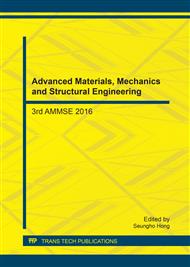p.84
p.89
p.93
p.102
p.107
p.112
p.117
p.123
p.129
Fabrication and Microstructure of Ru Core Silica Shell Structure Particles by a Reverse Micelle and Sol-Gel Processing
Abstract:
The Ru core SiO2 shell nano size particles have been synthesized within reverse micelle via metal alkoxide hydrolysis and condensation. The size of the particles and the thickness of the coating can be controlled by manipulating the relative rates of the hydrolysis and condensation reactions of tetraethoxysilane (TEOS) within the micro-emulsion. The average size of synthesized Ru core SiO2 shell particles was about in the size range of 15-40 nm. The average size and distribution of the synthesized Ru core SiO2 shell particles increased and narrow with R value increased. Otherwise, the average size and distribution of the synthesized Ru core SiO2 shell particles decreased and narrow with H value increased. TEM studies of particle formation indicate that the reaction process in the complex system containing reverse micelles and TEOS is governed by a diffusion-controlled process. The effects of synthesis parameters, such as the molar ratio of water to TEOS, and the molar ratio of water to surfactant, are discussed.
Info:
Periodical:
Pages:
107-111
Citation:
Online since:
February 2017
Authors:
Keywords:
Price:
Сopyright:
© 2017 Trans Tech Publications Ltd. All Rights Reserved
Share:
Citation:


